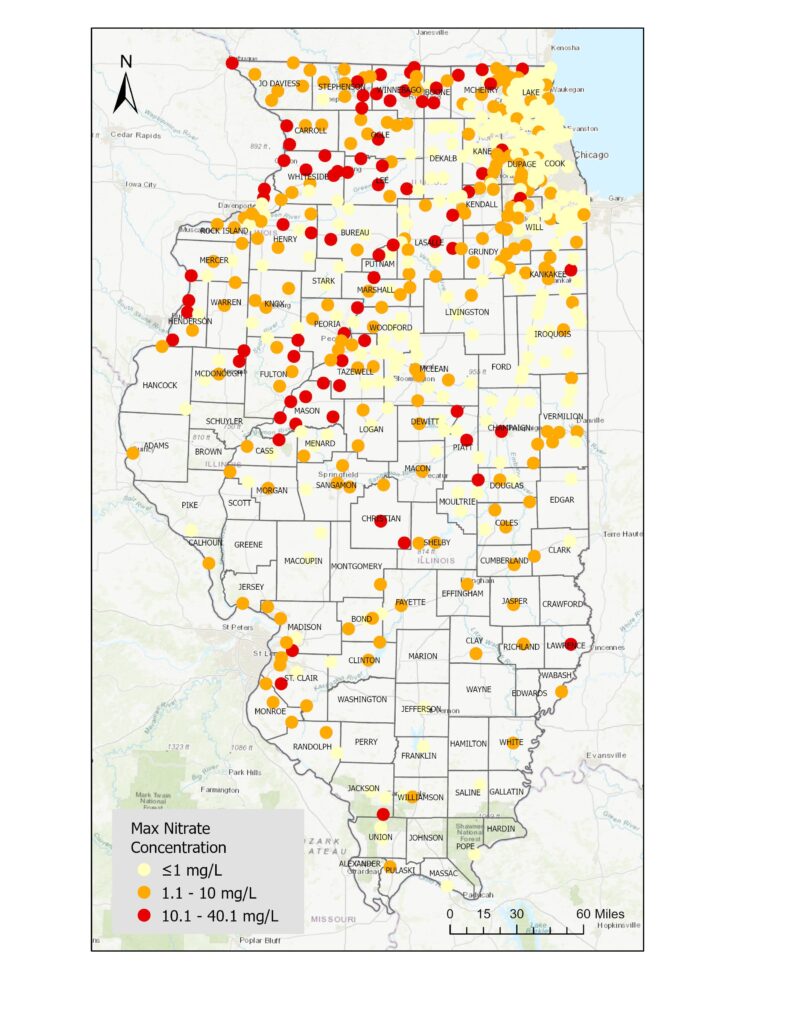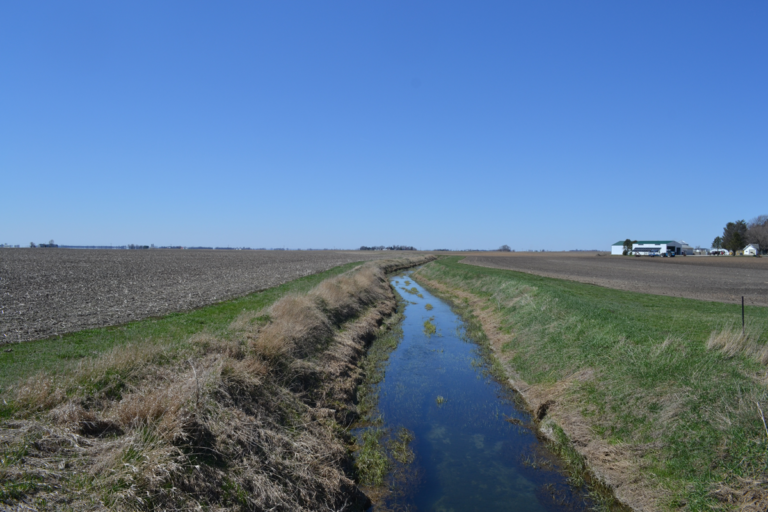Millions of rural residents across the Midwest are at risk of nitrate contamination in their drinking water, but they might not know it.
Many rural residents get their drinking water from private wells, which are not regulated by state or federal governments. And if residents aren’t regularly testing their well water, they could be at risk of contamination.
A new report from Prairie Rivers Network, an Illinois-based environmental non-profit, outlines the dangers of nitrate contamination in rural well water. Nitrates, which run off of fertilizer-laden agricultural land, can have severe human health impacts and harm aquatic life.
“We just assume it’s all safe,” says Catie Gregg, who helped write the report. “But nitrate has no taste, no smell, no color. There’s nothing other than actually testing your water that can tell you whether it’s contaminated or not.”
Gregg says there’s very limited publicly available data on nitrate levels in Illinois’ water supply. But, she says, the data that does exist shows widespread contamination, in some areas reaching up to nine times the safe drinking water standard laid out by the U.S. Environmental Protection Agency — some of the highest nitrate levels in the country.

“This is a concerning lack of data on shallow wells in Illinois,” Gregg says. “Some wells have been seen to have exceptionally high nitrate levels, but we don’t know how widespread this is because we don’t have comprehensive testing.”
Nitrate contamination exists wherever there’s farmland, impacting both surface and groundwater. A recent study from Kansas State University shows nitrate levels have gone up significantly over the past 30 years in the Great Bend Prairie aquifer, which provides water to more than five thousand wells.
States like Iowa also have advocated for the need for increased testing and awareness of the issue.
Gregg says it’s in farmers’ best interest to do everything they can to cut down on nitrate runoff.
“Farmers, as rural residents, are some of the people who are most affected by nutrient pollution,” she says. “But they’re also the people in the position to make the biggest change.”
Planting cover crops can help farmers reduce their nitrate runoff by improving soil health and reducing soil erosion. Gregg says farmers can also establish riparian buffer zones on the edges of their fields by planting natural vegetation to help keep nitrates and other contaminants in-field.
The Illinois Department of Natural Resources is currently updating the state water plan, and Gregg says this is the perfect opportunity to implement a comprehensive groundwater survey.
“If we’re going to be setting the agenda for our water quality and water use for, say, the next 10 years, we need to know what our current level of quality is,” she says.
She also says there’s been a lot of attention paid to the Midwest’s contribution to nitrate contamination in the Gulf of Mexico and not enough to the harm done closer to home.
“We’re swimming in the water. We’re drinking the water. We’re recreating in it.”
Follow Dana on Twitter @DanaHCronin
Copyright 2021 Harvest Public Media. To see more, visit Harvest Public Media.9(MDM5MjE5NTg1MDE1Mjk1MTM5NjlkMzI1ZQ000))

